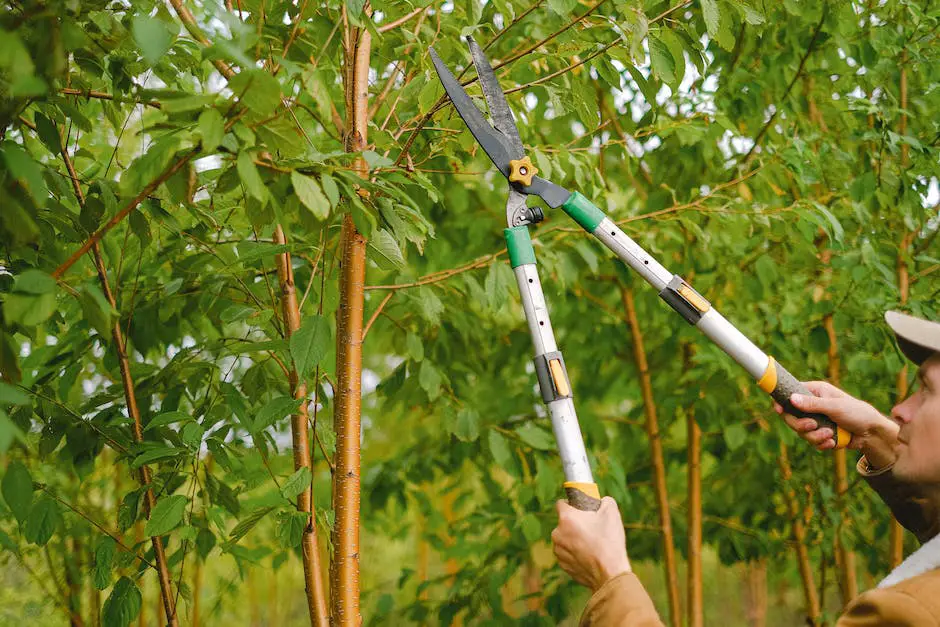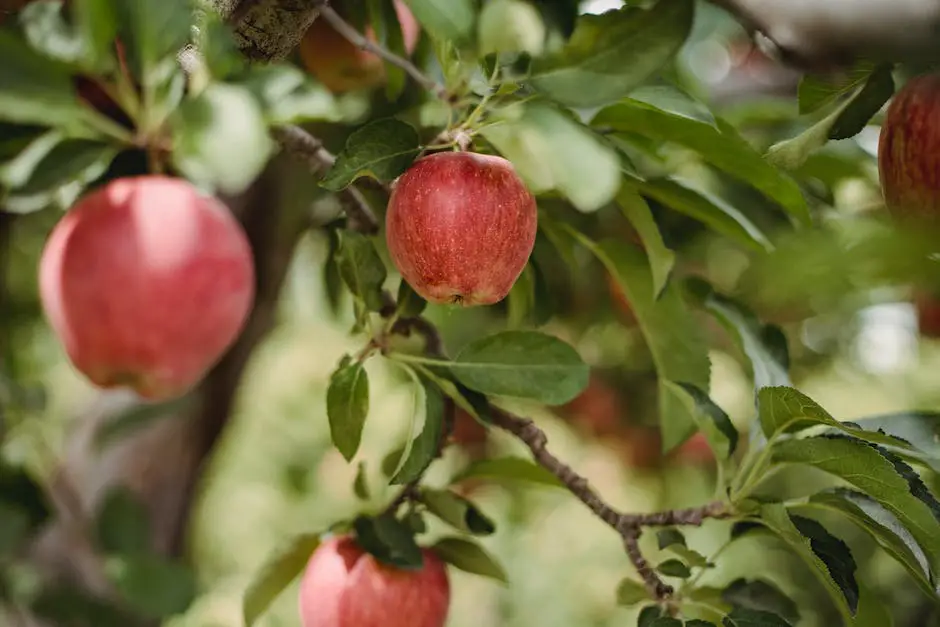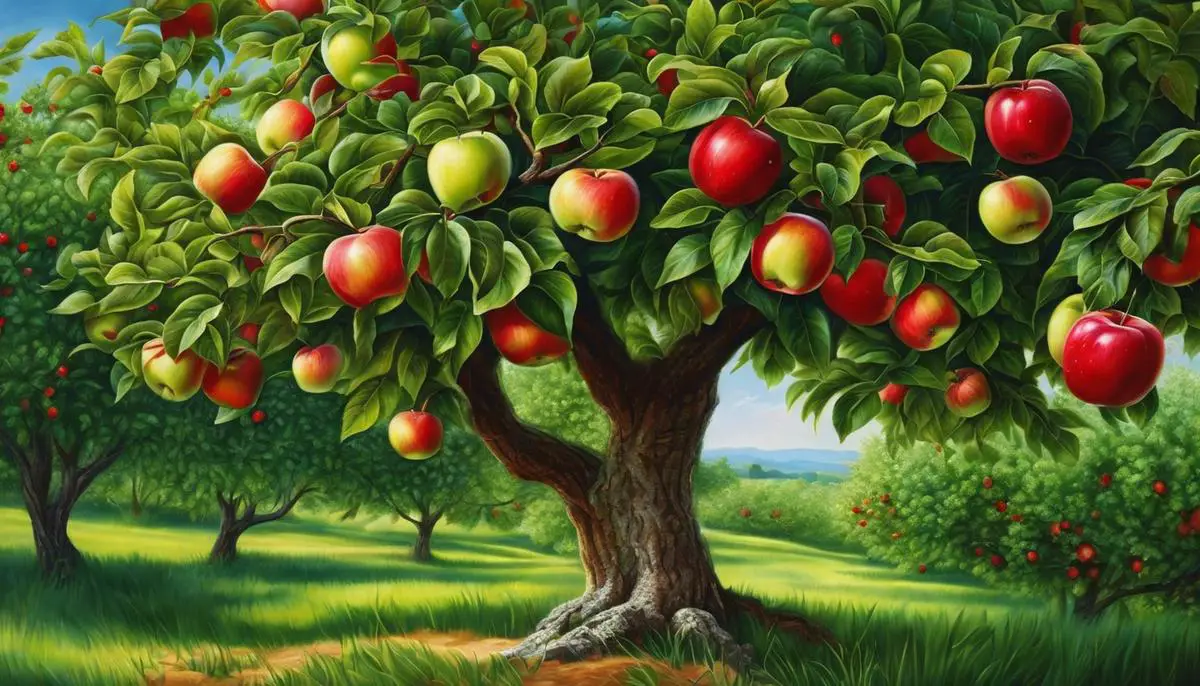Pruning, a vital facet of apple tree maintenance, can seem intimidating to the uninitiated. However, with the right knowledge and resources, anyone can master this essential task. It’s enough to understand the fundamentals, such as pinpointing the right time to prune, knowing the essential tools, and familiarizing yourself with the various methods for pruning. To further deepen your understanding, recognizing signs of tree health issues and disease can influence the outcome of your pruning work decisively. Not to mention, refining your pruning skills with advanced techniques, designed not only to spur growth but also to render healthier fruit and extend the apple tree’s lifespan, can make a world of difference.
Understand the Basics of Pruning
The Art and Science of Successful Apple Tree Pruning
Pruning your favorite apple trees can seem like a complex task, but fear not! With the understanding of some fundamental principles, it can turn an orchard from good to great. Following these guidelines, the art of apple tree pruning can be mastered with a little patience and a good amount of practice.
Firstly, accept that pruning is vital. It aids the health of apple trees by eliminating diseased or dead branches, providing more exposure to the sun and improving air circulation. Regular pruning encourages the growth of new, stronger fruit-bearing branches and, ultimately, plumper and more abundant apples.
Determining the right time to prune is crucial. The ideal period is late winter to early spring when the trees are still dormant but the worst cold has passed. This allows the wound to heal faster, minimizing the risk of disease or insect damage.
Understanding the structure of an apple tree is pivotal. The tree’s center leader – the primary stem – should be the tallest, with branches tiered evenly around it in a spiral pattern, each tier getting more ample as they descend. This shape, often called a “Christmas Tree” shape, allows all branches to get enough sunlight.
Start with cutting out the “3 Ds”: dead, diseased, and damaged branches using sharp and clean pruning tools. Sharp tools make clean cuts, reducing damage to the tree, while cleaned tools can prevent the spread of disease.
Remember, more isn’t always better when it comes to pruning. A correctly pruned apple tree has about 50-70% of its branches left intact. Over-pruning can stress the tree and may lead to low fruit yield.
The central leader and branch angles require keen attention. Ideally, branches should form a 60° angle with the trunk. If branches are steeper (+90°) they will grow weak and produce less fruit, while too low angles (-45°) will be too vigorous and shade the lower branches.
Finally, patience is paramount. Pruning properly is a several-year commitment, but remember, good things take time. Most mistakes will grow back in future seasons. The art of pruning is learned through experience, so don’t be afraid of making mistakes.
And there you have it. The fundamental principles of pruning apple trees are not as daunting as they first seem. Paying attention to your trees, providing care, and taking time to understand their needs can yield a rich, fruitful, and satisfying hobby. Yes, there’s effort involved, but when that golden autumn sunshine glows through your well-structured, robust apple trees heavy with the fruits of your labor – nothing can quite beat that feeling. Happy pruning!

Identify Tree Health and Disease
Title: Identifying and combating common diseases in apple trees
Apple tree cultivation is a rewarding endeavor, known to engage the senses and foster a deep appreciation for nature’s bounty. However, like all good things, successful apple tree cultivation requires vigilance, particularly when it comes to spotting and addressing common tree diseases that could potentially harm these precious fruit-bearers.
First stop on our quest to maintain healthy apple trees is a common foe — Apple Scab. These fungal diseases are easily recognizable owing to the dark, scaly lesions that appear on leaves, blossoms, and even fruit. Regular monitoring in early spring and throughout the tree’s active growth period is instrumental in identifying scab. Once you spot it, organic options such as sulfur and copper sprays can be applied as a proactive method of treatment and prevention.
Powdery Mildew is another common adversary; symptomatic of its presence are a white, powdery film on leaves and sometimes even the fruit. Treatment involves routine pruning, allowing sunlight and air to circulate freely, thereby minimizing the chances of powdery mildew taking root. The application of sulfur or other organic fungicides is also beneficial.
Fire Blight, as ominous as it sounds, can cause significant damage to apple trees. The symptoms quite live up to its name, presenting as wilting, browning, and a burned-like appearance of branches. An aggressive pruning strategy, where infected branches are removed well below the visible signs of damage, is the best line of defense. Copper sprays also come handy during the dormant season to keep fire blight at bay.
Cedar Apple Rust might sound peculiar, but its symptoms are widely noticeable. The disease causes yellow spots on leaves, later developing into protrusions or tubes on the underside. Growing apple trees away from any cedar or juniper trees is a holistic preventive measure. However, once the disease is spotted, the use of efficient fungicides can combat cedar apple rust effectively.
Sooty Blotch and Flyspeck Diseases are two fungi that operate in tandem, causing dark blemishes on the apple’s surface. While they do not affect the fruit’s edibility, they surely diminish its marketability. Thorough annual pruning, allowing sunlight to freely reach all parts of the tree, is one practical control measure. For additional protection, application of fungicides made from neem oil or other organic material in late summer will curb these fungal friends.
In the spirit of nurturing and cultivating apple trees, understanding these common diseases, their indications, and knowing the right treatment strategies become important. Just as pruning is pivotal to the health of apple trees, so is the art of disease prevention and treatment. Remember, an apple (tree) a day, keeps tree diseases away. Or something like that. Happy gardening!

Master Pruning Techniques
Embarking on the journey of growing apple trees takes a blend of enthusiasm and skill, coupled with a good understanding of the processes involved. With the basics of pruning, disease control, and others established, we delve deeper into advanced methods that promise a more fruitful and disease-free apple harvest.
A pivotal part of any seasoned apple grower’s arsenal is the practice of thinning. Thinning, or the removal of a portion of fruit from the tree during its growing cycle, allows the remaining fruits to grow larger, helps manage diseases, and minimizes the risk of limb breakage. The process is usually carried out early in the season, just after the tree has set its fruit. For bountiful results, remove enough fruit so that there’s about one apple every six to eight inches along the branch.
Understanding and applying proper fertilization methods also contribute significantly to the health and productivity of apple trees. Balanced nutrition not only nurtures the general health of the tree but influences fruit quality as well. Utilize a slow-release fertilizer rich in nitrogen, potassium, and phosphorus, and apply it in the early spring. Too much fertilizer can lead to excessive foliage, hence, use only the recommended amount indicated on the package.
Watering too is an essential aspect to consider. While apple trees do need a consistent supply of water, over-irrigation may dilute the nutrients, hence, affecting fruit quality, or result in waterlogged roots that can be detrimental to the tree. While watering, ensure the water penetrates deep into the roots, but let the soil dry out slightly before watering again.
Crop rotation on a more grandeur scale assists tremendously in pest and disease control. Pests and diseases that afflict apple trees often make use of fallen leaves or fruits as their breeding grounds. By regularly clearing away fallen leaves and fruits, one can significantly reduce the population of pests and diseases in the orchard, thereby promoting a healthier, more productive crop.
Lastly, utilizing companion planting widens defense against pests. Certain plants emit odors that deter pests and predatory insects, while others lure beneficial insects. Garlic and chives, for instance, deter pests with their strong scent. Plants such as sweet alyssum and dill attract beneficial insects that prey on apple pests.
In our quest to improve the health and yield of apple trees, several measures have been discussed such as thinning, fertilizer use, proper watering, crop rotation and companion planting. Combining these advanced methods with the basic knowledge of apple tree care sets one on the path to fruitful apple tree farming. Remember, the art of apple tree growing is an ongoing learning process, and with each challenge faced comes the opportunity to learn something new. Allow the love for this hobby to lead you on this amazing path of discovery and success.

The power of informed pruning is indeed much more than just aesthetics; it is a fine balance of science and an art. It shapes the health of apple trees, their productivity, and longevity. Clarity on the best pruning schedule, the necessary tools, and the diverse pruning strategies forms the bedrock of this task. The ability to discern signs of tree ailments and diseases directly impacts the efficacy of your pruning work. Moreover, perfecting your pruning touch with more nuanced techniques that foster growth, yield more robust fruit, and enhance the tree’s lifespan can transform your apple tree maintenance. So, let this seed of knowledge germinate, apply it mindfully to your apple trees, and watch them prosper in health and abundance.